- Bernard Preston homepage
- Worm farms
- Small Basic Worm-farm
Small basic worm-farm
A small basic worm-farm can be made inexpensively using two buckets, one with a lid.
With many new activities it's often best to start on a small scale to see if it will sustain your interest; otherwise the worms will die from neglect. You could use an old bathtub but then you must make a waterproof lid to keep the rain and rats out.
But two buckets are a good way to begin.
Place your worm-farm in the shade, not where it's out of sight and mind. These are your pets and whilst they will up to a point humour you if neglected, they do require just a modicum of attention.
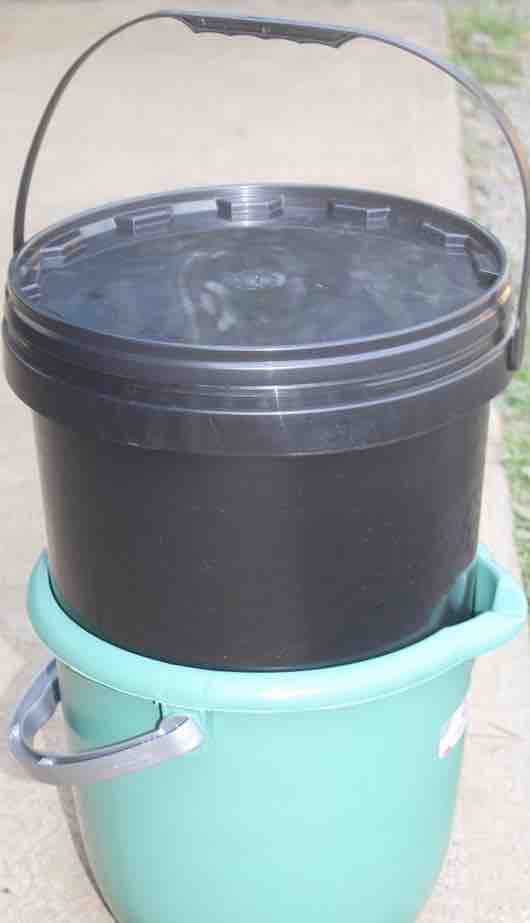
In particular they must be fed regularly and the worm-wee watered into your garden.
A worm farm in many ways is just a high-speed compost heap; everything happens faster. The little creatures eat their own weight in food every day, their fecal material containing highly beneficial substances for your plants.
The nutrition of plants like arugula in our green garden is utterly dependent on organic fertilisers like that supplied by a worm farm.
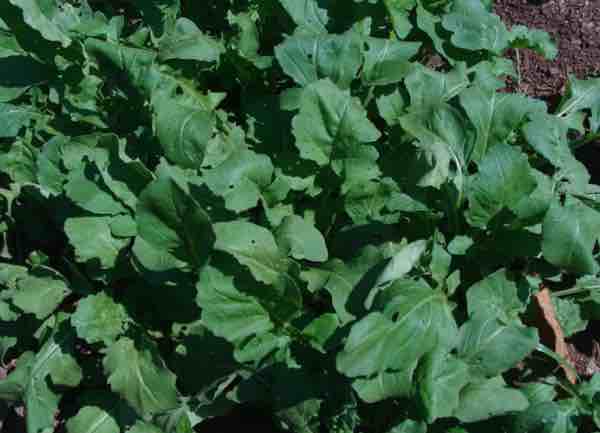
Humic-acid in particular makes it easier for plants to absorbe both water and nutrients from the soil.
The process takes about six-weeks depending on how finely you chop up the waste from your kitchen and garden. Whole potatoes or butternut will take longer obviously but you could cut them at least in two, penetrating the skin to the innards. In particular they love vegetables that have begun to rot.
The worms are living creatures so they must have plenty of air; the lid of the top bucket should be be kept ajar. And periodically use a small fork to dig deeply down into the mixture, twisting slightly to loosen the stuff to aerate it.
However if rainwater gets in they will drown so do not make holes in the lid. You could cover it with a bag during inclement weather.
The lower bucket must be emptied regularly. If the level of the leachate rises so that it begins to flood the upper-chamber the worms will start to crawl out. Dilute it several times before pouring the liquid around your young seedlings.
Place a brick in the bottom of the lower bucket, to keep the upper one out of the worm-wee. You can get them with an indentation for your hand; that is perfect.
Fill the upper bucket as follows.
- The bottom-quarter is filled with compost.
- Fill the next quarter with kitchen-waste.
- Then toss in the worms.
- Some garden-waste like lawnmower clippings or autumn leaves is fine.
- A handful of wood-ash or lime will keep it from becoming too acidic.
- A shovelful of cow or horse manure is fantastic; no chicken-litter.
- Cover with old cabbage-leaves, sheaths of mealies or cardboard; anything to keep it dark and moist.
Feed your worms
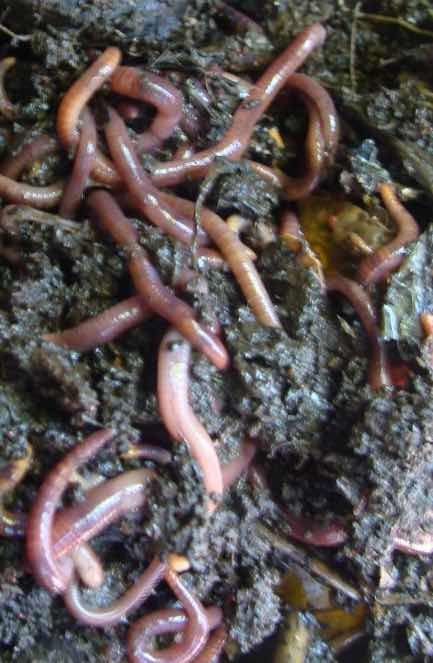
Feed your worms at least once a week with a bucket of kitchen waste. They love half-rotten potatoes, apple cores and butternut skins, for example; any greens will do, dead birds found in the garden or a mole. You can put eggshells in provided they haven't been boiled, teabags and basically all your peels; and so on.
They will tolerate small amounts of bread and meat; no dairy-products.
Avoid onions, pineapples and citrus, though to be honest they are amazingly tolerant.
If you take a handful of the stuff in the bucket and squeeze it, nothing should drip out. If it looks a little dry, sprinkle with a watering-can. Generally the liquid in your kitchen waste is more than enough.
Too much water is the great enemy.
- Every week at least remove some of the vermi-compost and use it for your seedbeds; it promotes germination. Return any worms you find to the farm.
- Loosen the material with a fork, twisting gently so as not to injure the worms; let air in.
- Feed your worm farm with a bucket of waste from your kitchen. Cover with more cabbage-leaves or cardboard.
- Empty the lower bucket, dilute the vermi-leachate and pour it around your favourite plants.
- That's it; simple, eh?
They will proliferate at an astonishing rate. Within a month or two you will be needing another small basic worm-farm; drop them into a compost heap or give the hens a feast.
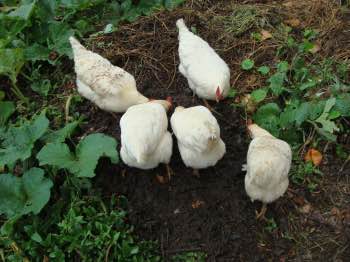
Small basic worm-farm
Use a small basic worm-farm to provide your own vermicompost and leachate; they will make a significant difference to a little patch of your garden.
Later you may want to graduate to something larger like an old bathtub; or a more sophisticated wormery[1].
Then you could turn these buckets into a doggy-poo worm farm.
These are my worm-farms. Sourcing enough food for them is problematic. I have upgraded to a solid top to keep rainwater out.
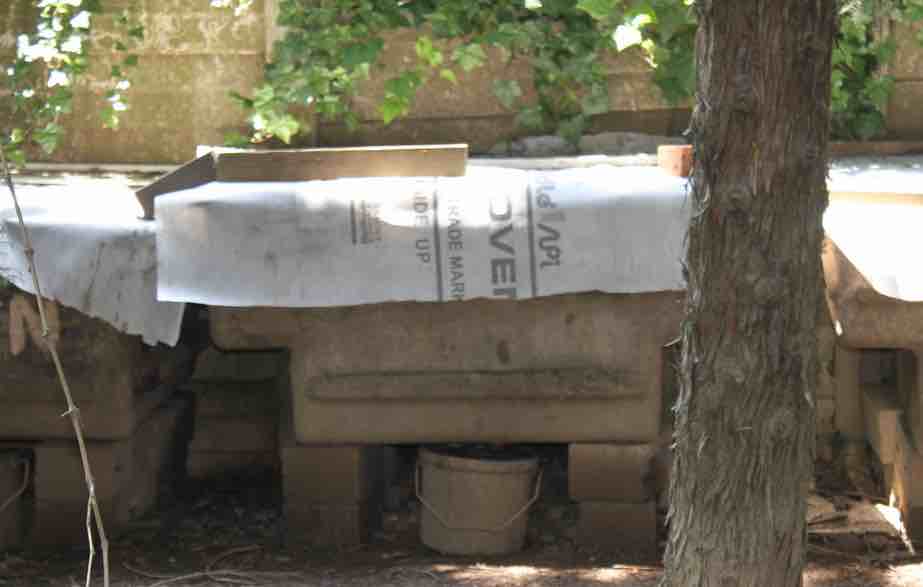
Your greengrocer is often a source of food for your small basic worm-farm.
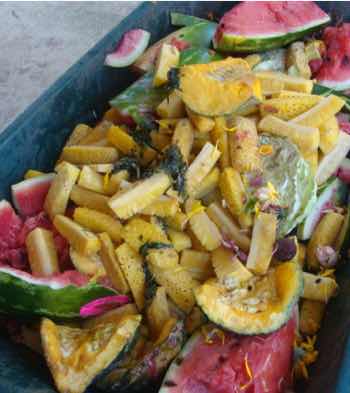
Reko Hilton
This complete small basic worm-farm can be purchased for R300 from Reko Hilton in the Midlands of South Africa. Find it on Facebook.
It comes with 200 worms. You should never have to buy any again; cared for properly they will double in number every month.
Do you know the story of the Persian emperor who offered a nave a gift of rice? One grain is placed on the first square of a chessboard, two on the second and four on the third; and so on until the 64th.
Or he could have chosen one bag for each square.
The first choice would have bankrupted his lord. It's all about the power of exponential growth[3]. Ask your teenager how many months it will take you to reach a million worms.
A small basic worm-farm got me started on what we call our green journey. We now have four large containers with millions of the wrigglies; getting enough food remains a challenge.
In countries like ours where garbage collection is ineffective, worm farms can help prevent a re-enactment of the black plague.
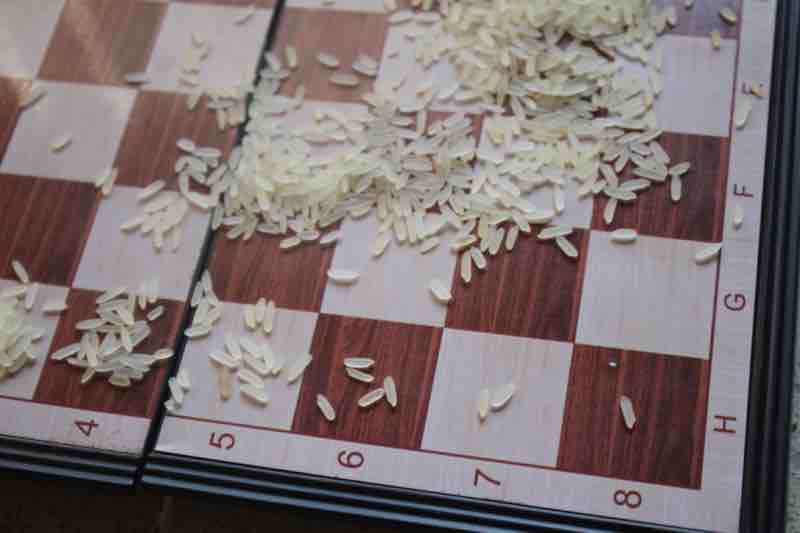
Potatoes thrive on compost and mulch
We grew half a ton of potatoes last year from general compost, leachate and a mulch made from church alter flowers; in a modest suburban garden.
Having discovered I was prediabetic I gave up potatoes from cold-storage forever; they have a very high glycemic index.
When browsing use right click and Open Link in New Tab, or you may get a bad gateway signal.
Newsletter
Our newsletter is entitled "create a cyan zone" at your home, preserving both yourself and Mother Earth for future generations; and the family too, of course. We promise not to spam you with daily emails promoting various products. You may get an occasional nudge to buy one of my books.
Here are the back issues.
- Lifestyle and ideal body weight
- What are ultra-processed foods?
- Investing in long-term health
- Diseases from plastic exposure
- Intensive lifestyle management for obesity has limited value
- A world largely devoid of Parkinson's Disease
- The impact of friendly bacteria in the tum on the prevention of cancer
- There's a hole in the bucket
- Everyone is talking about weight loss drugs
- Pull the sweet tooth
- If you suffer from heartburn plant a susu
- Refined maize meal and stunting
- Should agriculture and industry get priority for water and electricity?
- Nature is calling
- Mill your own flour
- Bake your own sourdough bread
- Microplastics from our water
- Alternative types of water storage
- Wear your clothes out
- Comfort foods
- Create a bee-friendly environment
- Go to bed slightly hungry
- Keep bees
- Blue zone folk are religious
- Reduce plastic waste
- Family is important
- What can go in compost?
- Grow broad beans for longevity
- Harvest and store sunshine
- Blue zone exercise
- Harvest and store your rainwater
- Create a cyan zone at your home
Did you find this page interesting? How about forwarding it to a friendly book or food junkie? Better still, a social media tick would help.
- Bernard Preston homepage
- Worm farms
- Small Basic Worm-farm
Address:
56 Groenekloof Rd,
Hilton, KZN
South Africa
Website:
https://www.bernard-preston.com